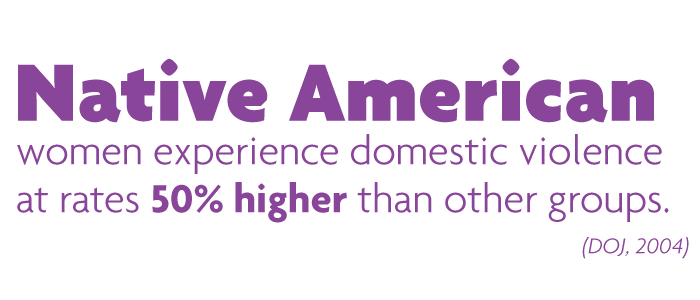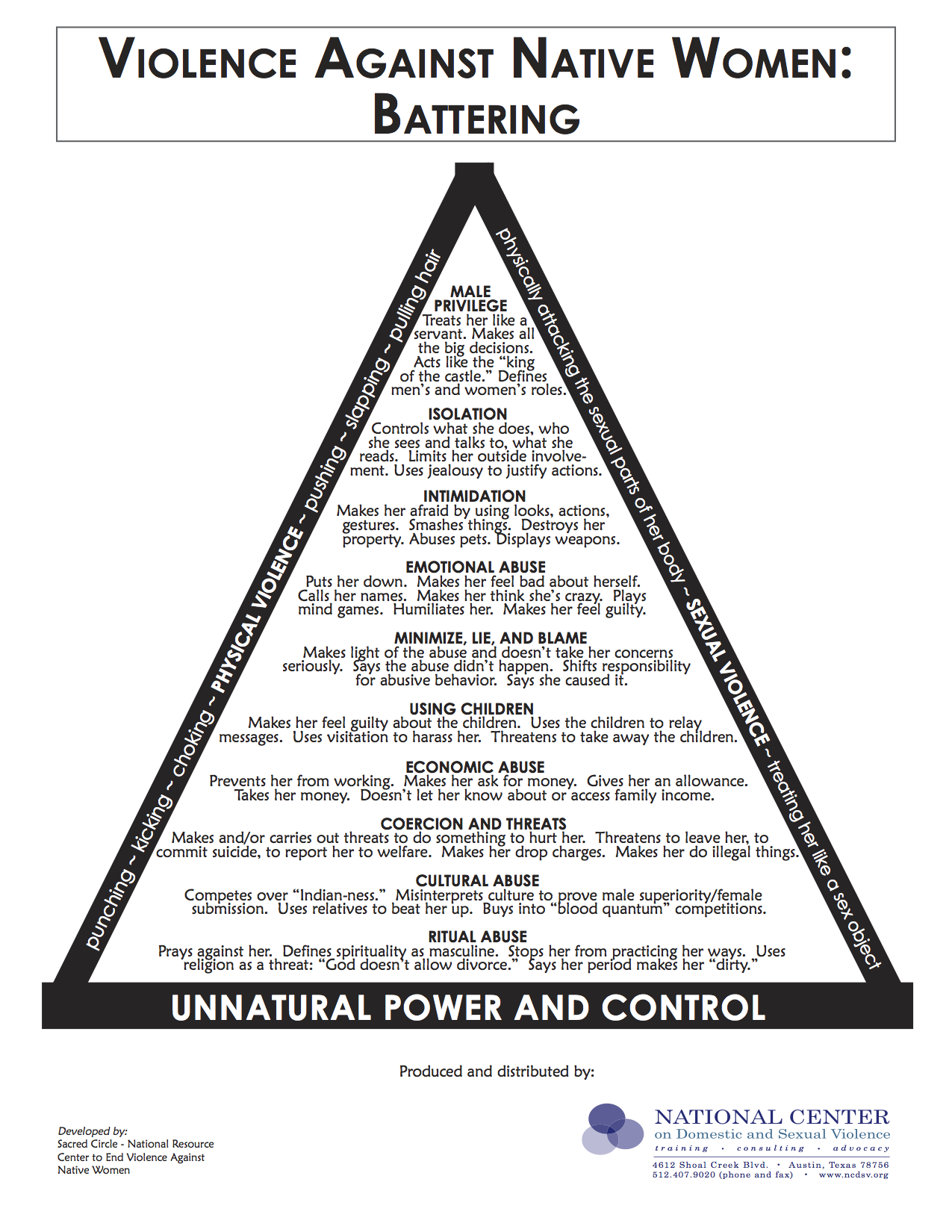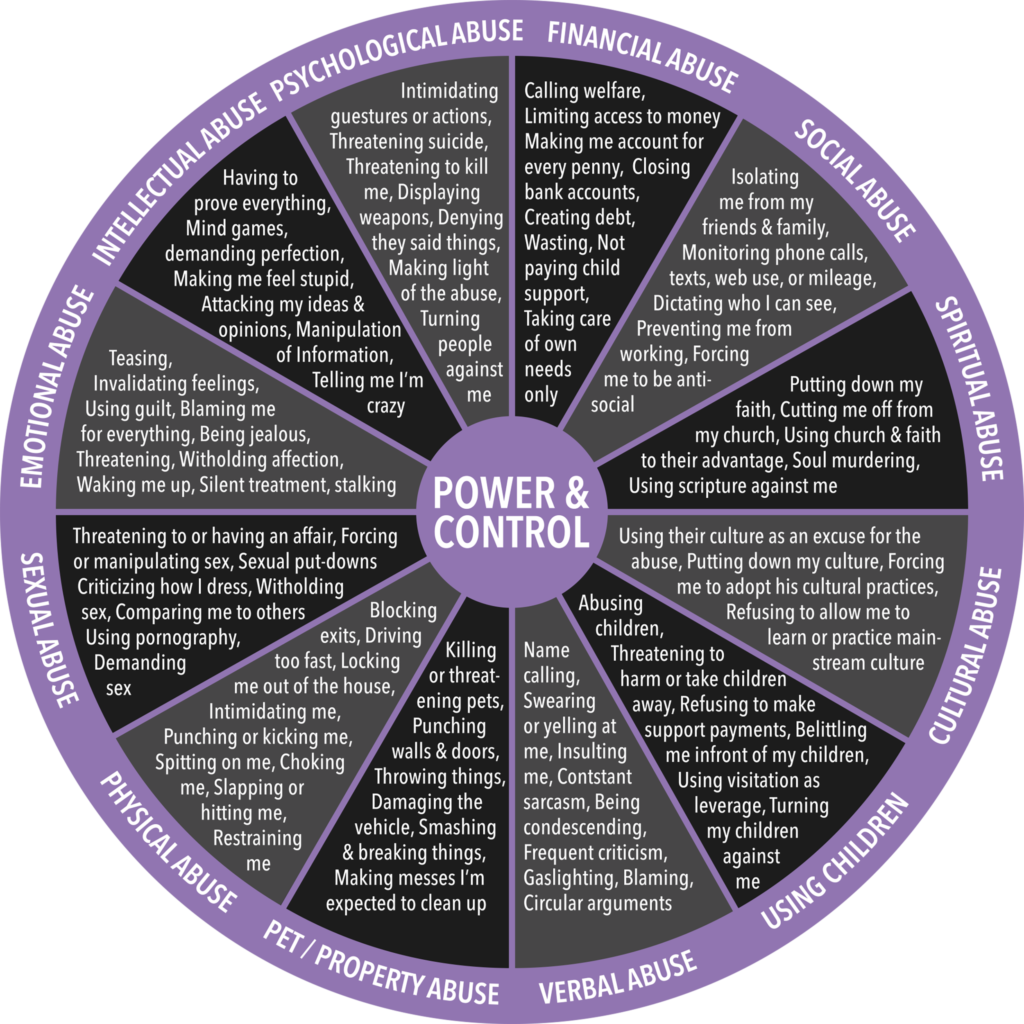According to the (DOJ) Department of Justice, the term “domestic violence” includes felony or misdemeanor crimes of violence committed by a current or former spouse or intimate partner of the victim, by a person with whom the victim shares a child in common, by a person who is cohabitating with or has cohabitated with the victim as a spouse or intimate partner, by a person similarly situated to a spouse of the victim under the domestic or family violence laws of the jurisdiction receiving grant monies, or by any other person against an adult or youth victim who is protected from that person’s acts under the domestic or family violence laws of the jurisdiction. Support domestic violence awareness by wearing purple.
What is Abuse?
It can be difficult to talk about domestic violence in Indian Country when people ignore that it’s happening or feel uncomfortable when the subject comes up. But, our reality paints a different picture – one in which American Indians and Alaska Natives experience abuse and violence at higher rates than other groups.
It is important to emphasize that when it comes to our people: violence and abuse are not Native American traditions, and neither is ever okay.
Abuse can happen to anyone belonging to any tribe and is not limited to a specific age, class, religion, gender or sexual orientation. It happens in relationships where couples are married, living together or dating.
Violent behavior can appear at any time in a relationship, but possessive or controlling behavior often reveals itself as the relationship becomes more serious. Domestic violence and dating violence occurs when an abusive partner uses a repetitive pattern of behaviors to maintain power over another person and control their actions. These behaviors can physically harm, arouse fear, prevent a person from acting freely or force them to behave in ways they do not want.


Types of Abuse
Physical Abuse
- Calls you names or criticizes you
- Isolates you from your family, friends or community
- Accuses you of cheating and acts jealous or possessive
- Uses weapons to threaten to hurt you, your children or family members
- Blames you for the abuse
- Cheats on you to intentionally hurt you
- Traps you in your home or blocks you from leaving
- Drives dangerously to scare you when you are in the car with them
- Forces you to commit a crime
Emotional Abuse
- Pushes, slaps, punches, hits or chokes you
- Pulls your hair
- Hurts you with weapons
- Hurts your children
- Hurts your pets
- Forces you to use drugs or alcohol
Spiritual/Cultural Abuse
- Prays against you or your family
- Restricts you from honoring spiritual or tribal beliefs
- Falsifies or misrepresents spiritual or tribal beliefs to get you to do something you don’t want to do
- Challenges your tribal status/blood quantum, or puts you down for not being “Indian” enough
Financial Abuse
- Gives you an allowance and tracks how much you spend
- Refuses to give you money for necessities like food, clothes, transportation and medicine
- Keeps your paycheck or per capita payments in their bank account and doesn’t give you access to it
- Maxes out your credit cards or takes out loans in your name without telling you
- Prevents you from working or tells you how much you can work
- Pressures you to ask friends or relatives for money
- Steals money from you or from shared accounts

Sexual Abuse
- Calls you hurtful sexual names
- Hurts the sexual parts of your body
- Continually pressures to have sex or demands sex when you don’t want to have sex
- Tries to normalize demands for sex by saying things like, “I need it, I’m a man,”
- Gives you drugs or alcohol to “loosen up” your inhibitions
- Forces you to dress in a sexual way
- Ignores your feelings about sex
- Holds you down during sex
- Forces or manipulates you to watch pornography or perform sexual acts
- Intentionally tries to pass on a sexually transmitted disease to you
- Hides or sabotages birth control
- Threatens to leave if you do not get pregnant
Digital Abuse
- Constantly looks through your texts, phone messages or outgoing calls
- Tells you who you can and can’t be friends with on Facebook and other social media sites
- Sends threats or insulting Facebook messages or emails to you
- Pressures you to send explicit videos of yourself
- Humiliates you by tagging you in hurtful social media updates
- Reveals secrets or private photos of you online
Statistics
Studies consistently indicate that women are disproportionately the victims of domestic violence, and most of those crimes are committed by men against women [1]. Nonetheless, it is important to recognize that domestic violence can and does occur in two spirit and LGBTQ relationships and against men perpetrated by women. As such, it is important to stress that culturally based, confidential support and services should apply equally to all domestic violence survivors, whether female, male, LGBTQ or two spirited [2].
The Power and Control Wheel, which is a non-Native diagram used to describe what typically occurs in an abusive relationship, has been revised by Native domestic violence advocates to reflect the root causes of violence in our tribal communities. The revised tool is the Battering Triangle and it helps depict the hierarchy of violence in our communities. The triangle includes cultural and ritual abuse and is reflective of colonization and the oppression that our people continue to endure. As a tool, it informs our advocacy at StrongHearts and better informs the broader community about the effects that historical trauma has in tribal communities, specifically as it relates to domestic violence.
Bureau of Justice Statistics, NCJ 187635 (Oct. 2001) [1]
resources
